-
Posts
639 -
Joined
-
Last visited
-
Days Won
2
Content Type
Profiles
Forums
Blogs
Gallery
Events
Store
Posts posted by Bilco
-
-
Hi Gernts,
Something for the well-dressed Victory medal collector on eBay, item #360760326034
Bill
0 -
Hi Jean-Michel,
Many thanks - it's clear that the ball is off-set and the obverse and reverse are in register.
Bill
0 -
Hi Jean-Michel,
Many thanks for the photos. Is the reverse of the medal with the suspension shifted to the left aligned with the obverse, or is the ball aligned correctly with the reverse?
Bill
0 -
Hi Gents,
Many thanks for the positive response. I've been looking at my other Belgian Official and Unofficial types, and I find that I have an Unofficial Type 2 which also has the off-set right reverse ...
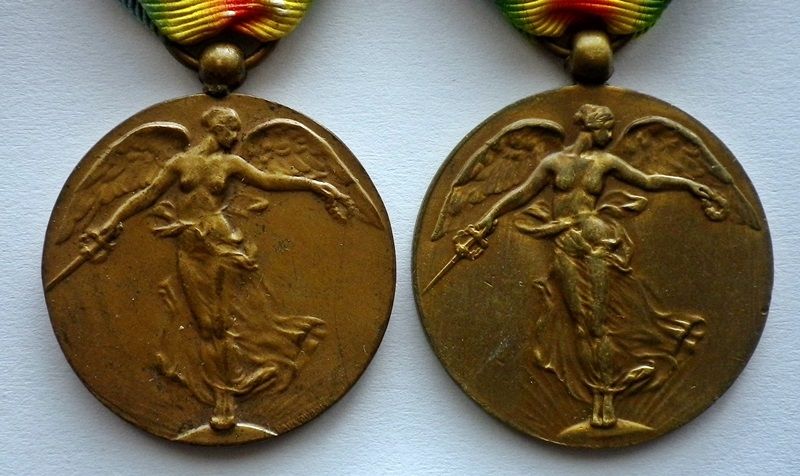
Obverses, Official on left ...
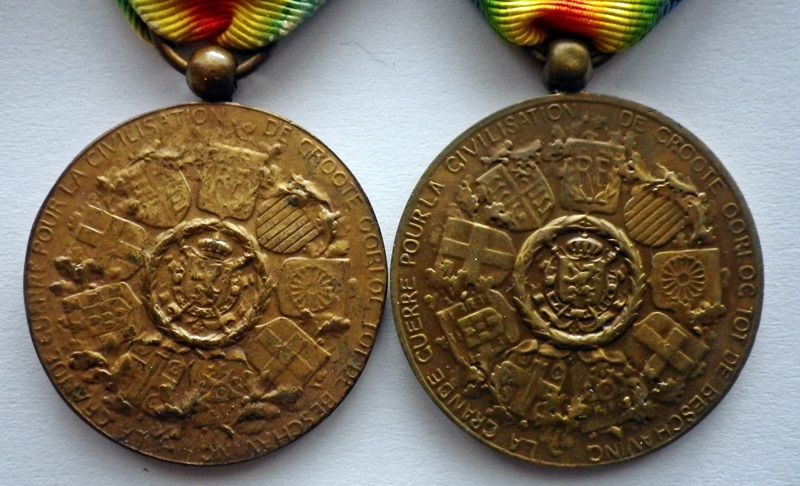
... and reverses. The Unofficial Type 2 also has traces of gilding.
Bill
0 -
Hi Gents,
I recently acquired what appears to be a Belgian Official Type 1, but it has a couple of odd features:
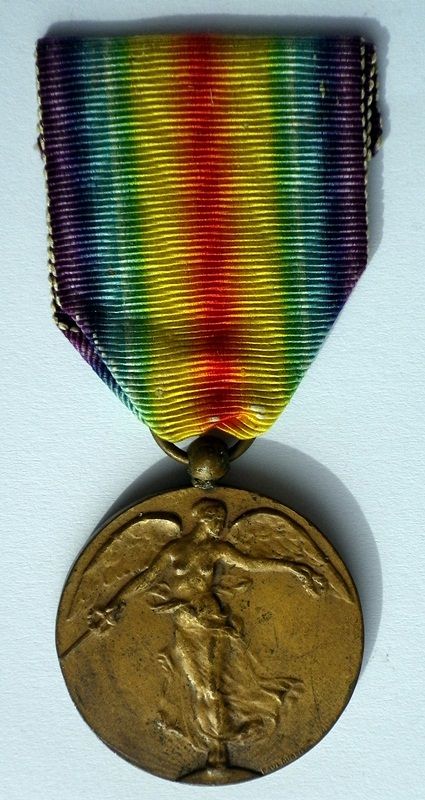
Obverse ...
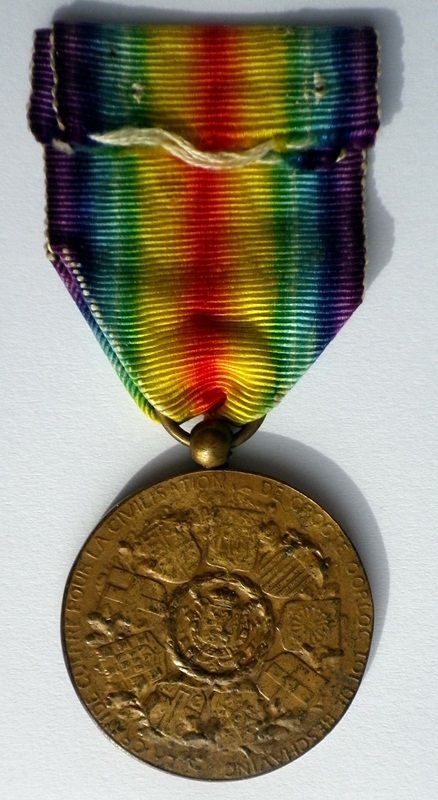
... and reverse.
And the close-ups:
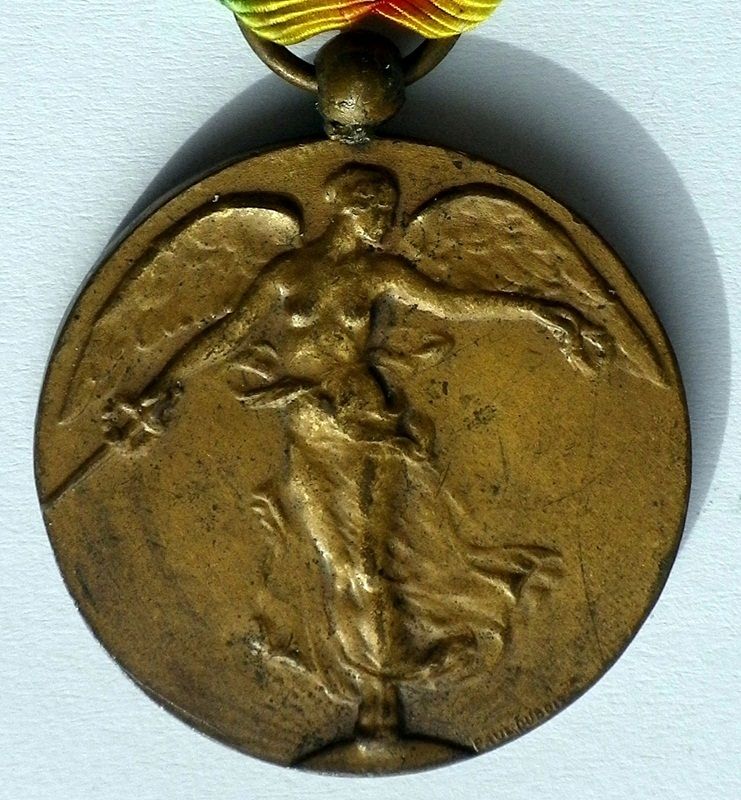
Obverse ...
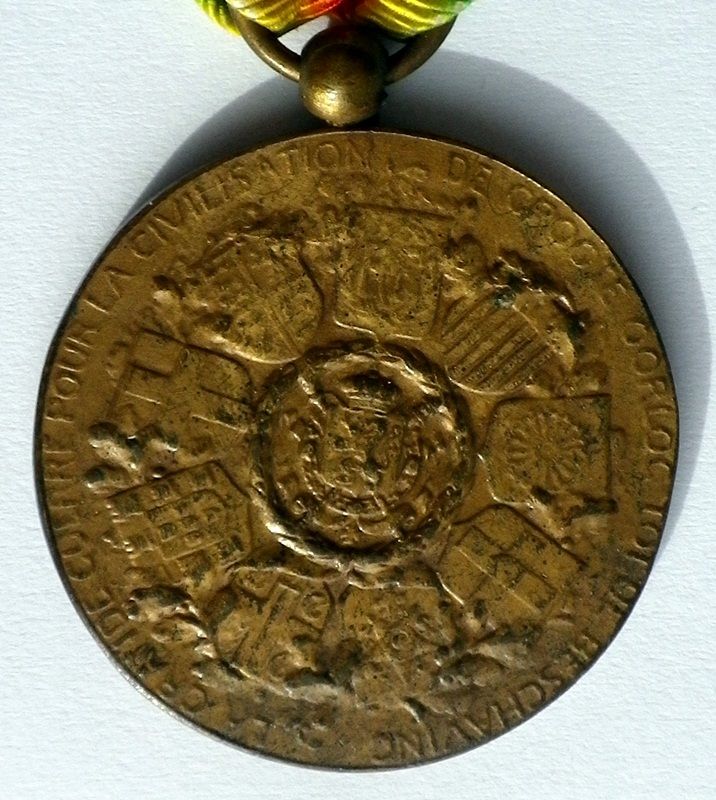
... and reverse.
The name Paul Dubois appears on the obverse, but the reverse is off-set by about 10 degrees right. The ball suspension is rather crudely soldered to the planchet, and the planchet seems to have been coated in gold lacquer - it's worn off on the high spots, particularly on the reverse. The ball is not coated, and seems to be bronze.
Dimensions seem to match the other example I have - 32mm diameter and 2.4mm thickness. The ribbon seems to be original Belgian, and there are two holes at the end which fit the two-pronged mounting device. There are no marks on the edge.
So, is it the real deal, or a copy? If a copy, is it contemporary with the real thing, or a cheap and nasty modern creation designed to deceive the gullible?
Any comments welcome.
Bill
0 -
Hi David,
It looks like a cast copy to me - rather coarse detail and lots of pitting. The real deal is very fine and smooth.
Bill
0 -
Hi Dave,
I have to agree with you - I would have thought Type 2 as well! Perhaps I should give up looking for the Type 1.
Bill
0 -
Hi Gents,
The gold coloured edge could also be a result of the light under which it was photographed. There's a direct comparison of my Indian Army example with a 'normal' finish in post # 32 on this thread. There's a definite gold-ish tinge which isn't there 'in hand'
Bill
0 -
Hi Rick,
It's interesting that the edge of the planchet still shows the bright finish, while the obverse and reverse are so dull. My Indian Army vic is uniformly dull overall, including the underside of the suspension! The cause is variously attributed to the poor finish of Calcutta Mint versions, or the effects of the Indian climate, though polishing may play a part.
Bill
0 -
Hi David,
A nice example of what seems to be a rare variant.
Bill
0 -
Hi David,
It looks OK - does it have the triangular stamp with AC and the BRONZE stamp on the edge?
I would think replacing the suspension would be difficult - certainly without removing one from another perfectly sound medal!
Bill
0 -
Hi David,
It looks OK to me!
Bill
0 -
Hi Gents,
Here are the photos of the Buttuller Portugal vic sold on eBay last night.
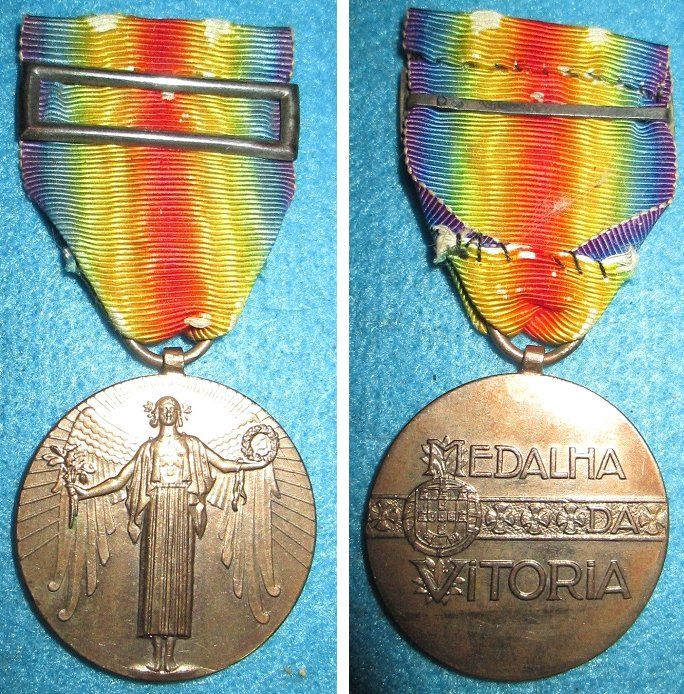
Bill
0 -
Hi Gents,
For some reason the links I put in post #2 didn't appear. They should be http://translate.googleusercontent.com/translate_c?depth=1&hl=en&rurl=translate.google.com&sl=it&tl=en&u=http://miles.forumcommunity.net/%3Ft%3D9288433%26st%3D15&usg=ALkJrhgAlakjMhxxQY8MMS2pGBj4bp2QGw http://miles.forumcommunity.net/?t=44916321
Bill
0 -
Hi David,
Was the Prague shop Antikyariat Klenek on Narodni? I was there in September, and made a similar bad decision!
Bill
0 -
Hi David,
On those Italian unofficials, there is some discussion on the Italian Miles medal forum that these were proposed designs but most were never made, and the one that was sold a while back was a proof copy of one proposal - it's not cast in bronze. See
The non-offical Belgium medals were made in Czechoslovakia, and they sometimes appear from sellers there.
Bill
0 -
Hi Gents,
On eBay there is another Portugal vic like that posted by Peron - post # 69 - with the narrow cylinder suspension. It's item # 190999847096.
Now that we have the photo of the original model for this medal the differences are clear - on the obverse the 'feathers' in the wings in the model overlap like roof tiles, while on the eBay item they are just rows of wavy lines that look very different.
I'll post photos in the next day or two.
Bill
0 -
Hi Peron,
Many thanks for posting this image. It appears to be the sculptor's plaster pattern from which the die would be produced using a reducing machine. It therefore shows the design in great detail, which is very useful when comparing genuine versions and suspected fakes!
The most famous reducing machine is that developed by Victor Janvier, and there is a photograph here medalblog.wordpress.com/2010/12/27/janviers_pantograph/
which shows the pattern in the machine being used to produce the die.
Do you have the whole catalogue? It would be nice to see the original pattern for the reverse!
By coincidence, I was at a talk today by the man who designed the Queen's Golden and Diamond Jubilee medals, as well as the 2005 gold sovereign coin, and several in the series of £1 coins, the latest of which will appear next year. He produces the design and it's made into the plaster pattern by a sculptor. There is more on the production of dies from patterns here http://medalblog.wordpress.com/2012/07/23/core-knowledge-on-minting-engraving/
Bill
0 -
IAW - 'in accordance with'?
Bill
0 -
Hi Gents,
There's a Siam vic on eBay - asking price $1999 - item # /121225161003.
There are a lot of accompanying photos, and it looks OK to me - what do you think? (Not that I'm in a position to buy at that price!)
Bill
0 -
Hi Gents,
The etsy web site http://www.etsy.com/uk/listing/60642739/antique-style-sterling-victory-angel-wwi?ref=market has a necklace with a Belgian vic as pendant - in silver:

The accompanying blurb says:
"A triple strand of Freshwater Pearls with Sterling Silver wire wrapping and clasp, upon which is draped a sterling silver antique reproduction Victory angel from WWI medal created by the famous Paul Dubois. The piece was cast from the original French piece over a century old, this lovely reproduction is hand crafted"
I passed the link on to Rob, who said:
"I have seen Belgian vics in silvered-bronze and silvered finish. I am aware of an example in silver-gilt with a hallmark on the suspension ring mainly because it is my collection. I have seen other vics from France that were also produced in a silvered-bronze or a gilt finish so it probably depended on how much money the person commissioning the piece had.
[This] ... is a cast copy in silver of the Belgian vic. This is most noticeable on the reverse. There was a similar cast copy of a Romanian vic discussed on the GMIC forum a little while ago."That Romanian vic (post # 52 in this thread) sprang to my mind as well - makes you wonder if someone could put these castings on a piece of ribbon and try to pass it off as a real variant ....
The etsy site has a couple of real Belgian vics on necklaces http://www.etsy.com/uk/listing/64535350/art-nouveau-victory-angel-necklace-la?ref and http://www.etsy.com/uk/listing/162802758/winged-victory-antique-assemblage?ref=sr_gallery_17&ga
Bill
0 -
Hi Gents,
I've just received, thanks to a heads-up from Rob, the gilt version of the Reissue Type 2:

And the obligatory close-up shots:

As Rob discussed with me in posts # 88 to 91 above, this one has a beautiful smooth, golden glow compared with the brassy version I posted in post # 87. The detail is also rather sharper than the brassy version, and the suspension is slightly different:

The brassy version ® has the cylinder soldered directly to the edge of the planchet, while the gilt version (L) has a small plinth formed on the edge to which the cylinder is soldered.
Best wishes,
Bill
0 -
Hi Lambert - Yes, it's got those two pairs of 'bubbles' as before!
Bill
0 -
Hi Gents,
Thinking about the origin of this crack - how are these ball, cylinder and knob suspensions formed? In the case of the ball, was it filed out of a piece of solid bronze, or could it have been formed from half-round stock? In the latter case, it would probably have been formed into a ball around a round bar to leave the hole in the centre, which would leave a join. If it was then soldered with the join against the planchet all would be well, but if the join was just out of the solder it would tend to widen when put under pressure - like this example.
There were some postings about a US vic with a split knob in the American (US) Victory Medals thread, the first post was #246 on page 13, and the last #262 on page 14.
Bill
0




WW1 Victory Medal with rear erased?
in Great Britain: Orders, Gallantry, Campaign Medals
Posted
Hi Muckaroon,
Can I suggest that you post this query in the 'Interallied Victory Medal' section, on the British Victory Medal thread - http://gmic.co.uk/index.php/topic/48253-british-victory-medals/page-8
There are people there who have seen most things to do with Victory medals, and migfht be able to help you.
Bill